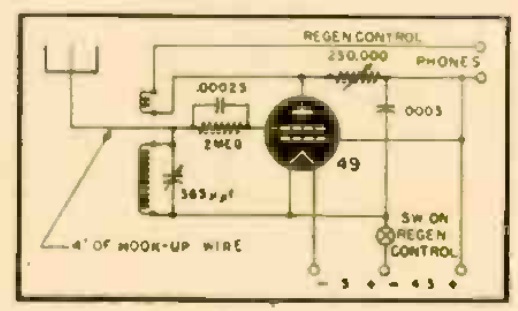 This wartime circuit from the May 1945 issue of Radio Craft is about as simple as it gets. It was sent in to the magazine by Jim Brophy of Chicago, who reported that it gave good volume on all of the local stations.
This wartime circuit from the May 1945 issue of Radio Craft is about as simple as it gets. It was sent in to the magazine by Jim Brophy of Chicago, who reported that it gave good volume on all of the local stations.
What’s somewhat remarkable–in addition to the low part count–is the fact that the set used two flashlight batteries for the filaments, and only three penlight cells for the “B” battery. The low voltage requirement was due to the space-charge principle. The grid closest to the cathode in the tetrode tube (in this case, a type 49) was kept at a positive voltage. The magazine’s editors noted that this was one of the oldest effects in tetrode tubes, but had dropped into obscurity. But with wartime shortages of B batteries, the magazine noted that it was worth some experimentation.
The name of the person who submitted the idea, Brophy, rang a bell. It doesn’t sound like a very common name, but also in 1945, one Loretta Brophy was working at WABD-TV in New York.
